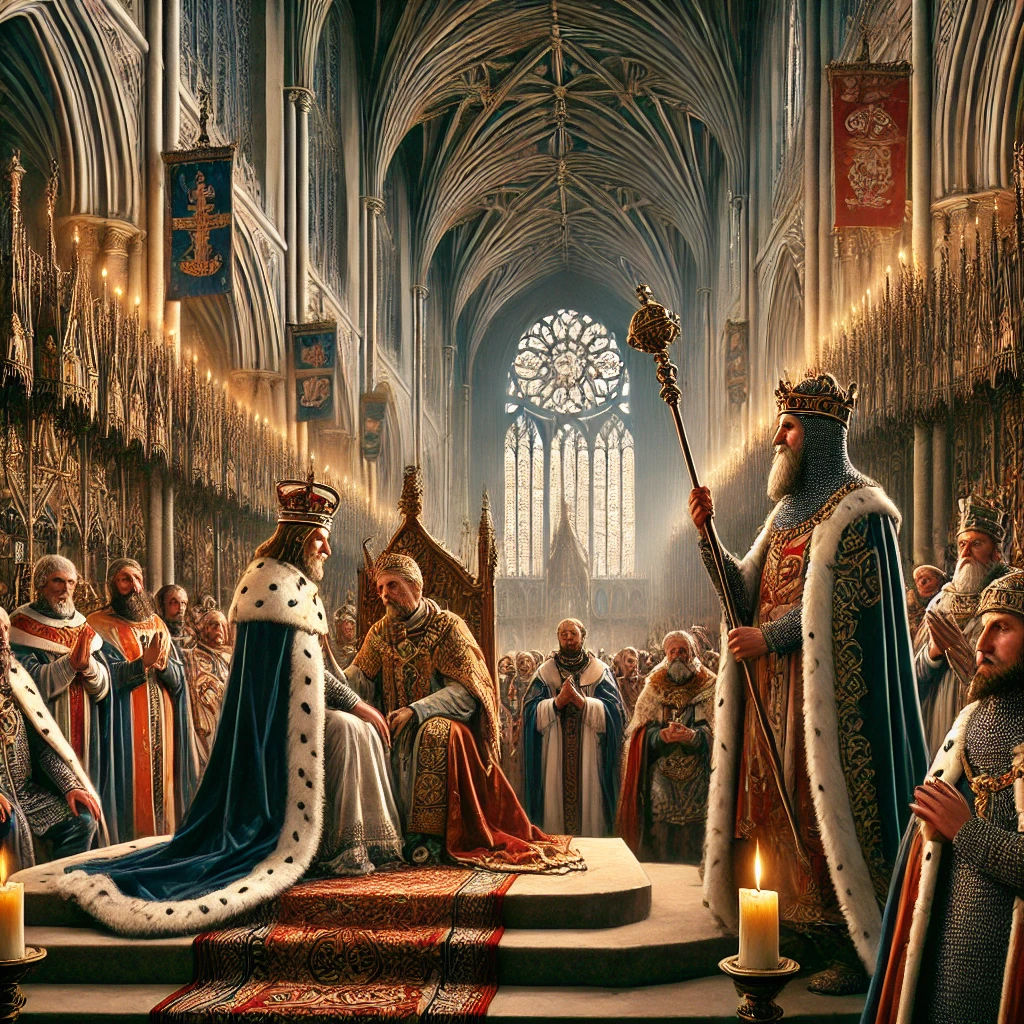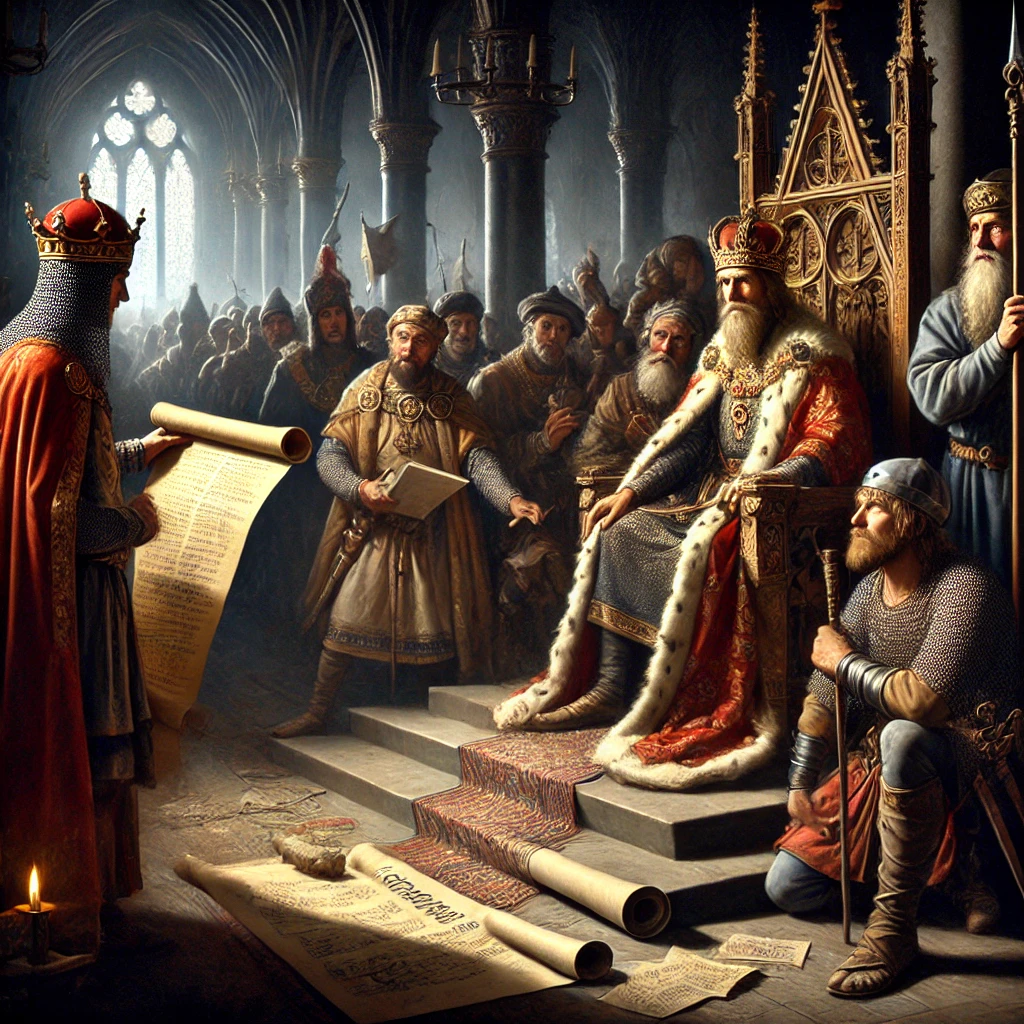On January 6th, 1066, Harold II was crowned King of England following the death of Edward the Confessor. His coronation marked a pivotal moment in English history, but Harold’s reign would be short-lived. The events that followed his ascent to the throne would soon plunge England into one of its most significant and turbulent battles—the Battle of Hastings—ultimately changing the course of English history forever. Harold’s rise to power was fraught with challenges, and the aftermath of his reign shaped the future of the English monarchy and the kingdom itself.

The Circumstances of Harold’s Coronation
Harold II, the son of Earl Godwin of Wessex, was a powerful noble in England, known for his military prowess and political influence. Upon the death of Edward the Confessor on January 5th, 1066, Harold was quickly crowned king. Edward had died without an heir, leaving the English throne open to competition. Although Edward had no direct successor, it was widely believed that Harold had been promised the throne by Edward on his deathbed. Additionally, Harold’s claim was supported by the English nobles, who saw him as the most viable candidate to maintain stability in England.
However, Harold’s claim was contested by other powerful figures. Notably, William the Conqueror, Duke of Normandy, also claimed that Edward had promised him the throne during a visit to England years earlier. This rivalry over the throne set the stage for a year of intense conflict. Harold’s coronation, therefore, marked the beginning of a struggle for power that would culminate in the pivotal Battle of Hastings later that same year.

Harold’s Reign and Challenges
Harold’s reign as king was filled with immediate challenges, both internal and external. After being crowned, Harold had to quickly consolidate his power and deal with immediate threats. One of the most pressing dangers came from the north, where Harald Hardrada, the King of Norway, laid claim to the English throne. Hardrada, with the support of Tostig Godwinson, Harold’s estranged brother, launched an invasion in the north of England.
Harold II’s military prowess was put to the test when he swiftly marched his forces north and defeated the Norwegians at the Battle of Stamford Bridge on September 25th, 1066. However, this victory came at a great cost, as many of Harold’s troops were exhausted and battle-weary. As he dealt with the Norwegian threat, Harold received news that William of Normandy was preparing to invade England from the south, claiming his right to the throne. Harold’s forces, though weakened, marched south to face this new challenge, setting the stage for the Battle of Hastings.
The Battle of Hastings and Its Aftermath
On October 14th, 1066, Harold II and his army faced William the Conqueror’s invading forces at the Battle of Hastings. The battle was a decisive turning point in English history. Despite his previous victory over Hardrada, Harold’s army was not in the best condition to confront William’s well-organized forces. The battle ended in a crushing defeat for Harold, who was killed during the fighting, marking the end of his reign. William’s victory at Hastings made him the first Norman king of England, and his subsequent coronation marked the beginning of a new era in English history.

The Battle of Hastings and the Norman Conquest fundamentally altered the social, political, and cultural landscape of England. With William’s victory, the Anglo-Saxon elite was displaced by Norman rulers, leading to significant changes in land ownership, law, and governance. The Norman Conquest also had lasting effects on the English language, as French became the language of the ruling class, influencing the development of the English language over the centuries.
Harold II’s brief reign, beginning with his coronation on January 6th, 1066, set in motion a series of events that would dramatically alter the future of England. His death at the Battle of Hastings marked the end of Anglo-Saxon rule and the beginning of Norman dominance. The Norman Conquest left a lasting imprint on English culture, language, and governance, shaping the nation for centuries to come. While Harold’s reign was short, it was a pivotal moment in history that led to one of the most significant transitions in England’s history.
